Basic First Aid Knowledge – A Safety Must-Have
When it comes to emergencies, having basic first aid knowledge is not just a nice-to-have; it's an absolute necessity. Imagine you are at a family gathering, and suddenly someone collapses. Panic sets in, but what if you had the skills to step in and help? Understanding the fundamentals of first aid can truly empower you to act swiftly and effectively in such situations. It’s like having a superpower that can save lives! From treating minor cuts to performing life-saving techniques, being equipped with first aid skills can make all the difference.
First aid isn’t just about knowing how to bandage a wound or apply ice to a sprain; it’s about being prepared to handle a variety of situations that can arise unexpectedly. Whether you’re at home, at work, or out and about, emergencies can happen anywhere. By familiarizing yourself with essential first aid techniques, you’ll be better prepared to respond when it matters most. Think of it as your personal toolkit for safety—one that can help you tackle a multitude of scenarios with confidence.
Moreover, the importance of first aid extends beyond just the immediate physical care. It also encompasses the emotional support you can provide to someone in distress. Knowing what to do can help calm both the victim and those around you, turning a chaotic situation into one where help is on the way. In this article, we will delve into essential first aid skills, discuss common techniques like CPR and the Heimlich maneuver, and highlight the importance of having a well-stocked first aid kit. Are you ready to become a first aid hero?
First aid refers to the immediate care provided to a person suffering from an injury or illness. Knowing the fundamentals can make a significant difference in emergency situations. It’s not just about treating physical injuries; it’s about being able to assess a situation, provide the right care, and make informed decisions until professional medical help arrives. Think of first aid as the bridge between an emergency and the arrival of trained medical personnel. Your actions can stabilize a person’s condition and even save their life.
Familiarizing yourself with common first aid techniques, such as CPR and the Heimlich maneuver, can prepare you for various emergencies and ensure you act quickly and effectively. These techniques are not just for healthcare professionals; they are for everyone. By learning these skills, you can be the calm in the storm when someone is in distress. Let’s explore these vital techniques in detail.
CPR is a life-saving technique used in emergencies when someone's heartbeat or breathing has stopped. Knowing how to perform CPR can significantly increase the chances of survival. It’s like giving someone a second chance at life. The process involves chest compressions and rescue breaths, which help keep blood flowing to vital organs until professional help can take over. Imagine being in a situation where every second counts; your knowledge of CPR could be the difference between life and death.
Understanding the specific steps involved in CPR is essential for effectively administering this critical first aid skill. Here’s a simple breakdown:
- Check the scene for safety.
- Ensure the person is unresponsive and not breathing.
- Call for emergency help or have someone else do it.
- Start chest compressions at a rate of 100-120 compressions per minute.
- After 30 compressions, give 2 rescue breaths if trained to do so.
Remember, even if you’re unsure, performing chest compressions alone can be incredibly beneficial until help arrives.
Being able to identify the signs of cardiac arrest, such as unresponsiveness and abnormal breathing, is crucial for initiating CPR promptly and correctly. It’s like being a detective, piecing together clues that indicate someone is in dire need of assistance. The sooner you recognize these signs, the quicker you can act, which is vital in a life-threatening situation.
Learning how to assist someone who is choking can be a vital skill. Techniques like the Heimlich maneuver can help dislodge an obstruction from the airway and save a life. Imagine enjoying a meal with friends when suddenly someone starts to choke. Knowing how to react can turn a frightening moment into a story of heroism.
Having a well-stocked first aid kit is essential for addressing injuries and emergencies. Knowing what items to include can enhance your preparedness for various situations. It’s like having a safety net that you can rely on when things go wrong. But what exactly should you include in your first aid kit? Let’s break it down.
A comprehensive first aid kit should contain items like:
- Adhesive bandages of various sizes
- Antiseptic wipes or solution
- Gauze pads and adhesive tape
- Scissors and tweezers
- Pain relievers like ibuprofen or acetaminophen
Understanding the purpose of each item can help in effective emergency response. It’s not just about having the items; it’s about knowing how to use them.
Regularly checking and replenishing your first aid kit is crucial. Ensuring that all supplies are up to date and in good condition can make a significant difference during emergencies. Just like your car needs regular maintenance, so does your first aid kit. Make it a habit to review your kit every few months, replacing expired items and making sure everything is in its place.
- What should I do if I witness someone collapse?
Check for responsiveness and breathing. If they are unresponsive and not breathing, call emergency services and start CPR.
- How often should I refresh my first aid kit?
It’s recommended to check your first aid kit every 3-6 months to ensure all items are in good condition and not expired.
- Can I learn first aid online?
Yes, many organizations offer online courses in first aid and CPR. However, hands-on training is highly recommended for practical skills.
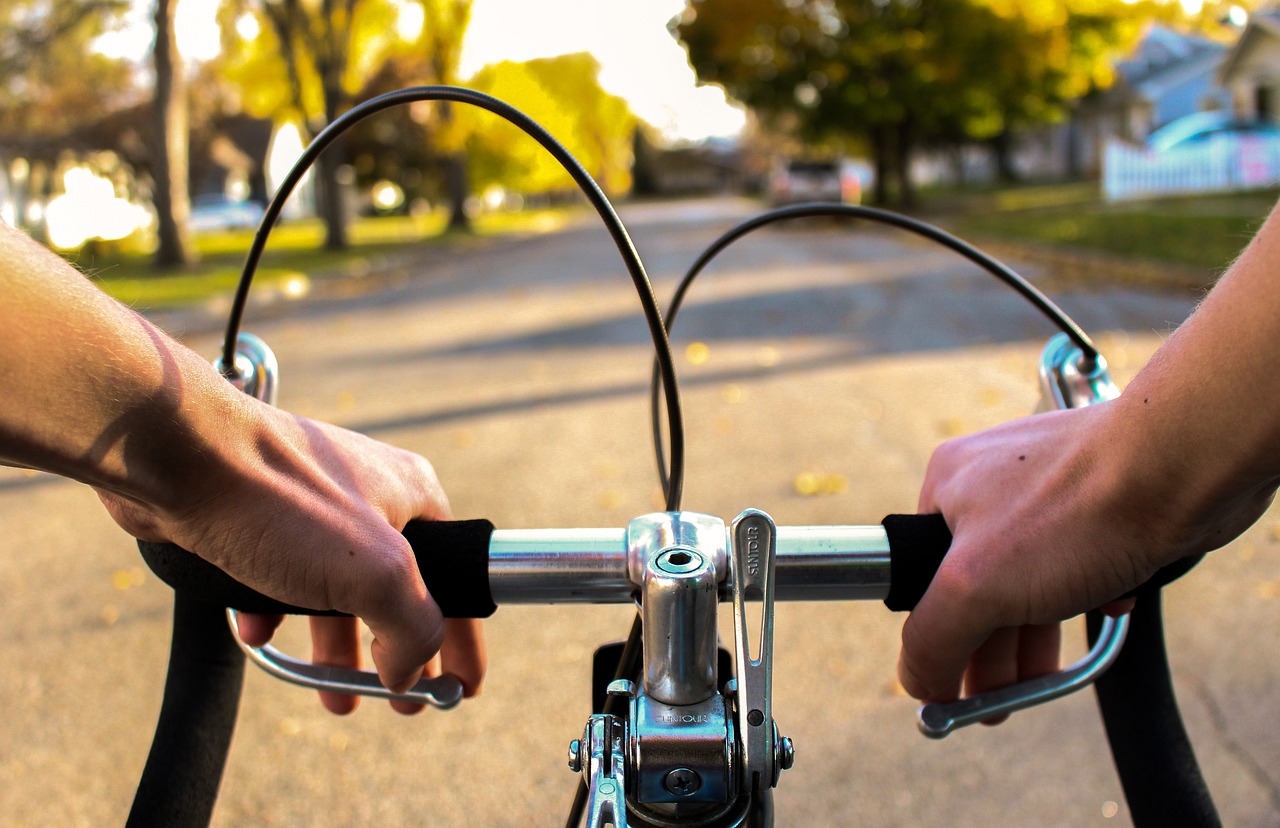
Understanding First Aid
First aid is not just a set of skills; it’s a lifeline in moments of crisis. Imagine you're at a family picnic, and suddenly someone collapses. Panic sets in, but knowing basic first aid can transform you from a bystander into a hero. First aid refers to the immediate care provided to a person suffering from an injury or illness. It’s the first step in the chain of survival, bridging the gap between the onset of a medical emergency and professional medical treatment. This knowledge can empower you to act swiftly and effectively, potentially saving a life.
Understanding the fundamentals of first aid can make a significant difference in emergency situations. For instance, if someone suffers a severe cut, applying pressure to stop the bleeding can be crucial. Or consider a scenario where a child accidentally swallows a small object; knowing how to perform the Heimlich maneuver can be the difference between life and death. First aid is about being prepared to respond to a variety of emergencies, and it requires a blend of knowledge, skill, and confidence.
Moreover, first aid isn't just for the professionals; it's for everyone. Whether you're a parent, teacher, or simply someone who enjoys outdoor activities, having these skills can provide peace of mind. It’s like having a safety net—you may never need it, but when the moment arises, you’ll be grateful you took the time to learn. In fact, many organizations offer first aid courses that not only teach the techniques but also boost your confidence in handling emergencies.
In summary, understanding first aid is a vital part of being a responsible and caring individual. It equips you with the tools to manage emergencies effectively and can significantly impact the outcome for someone in need. So, are you ready to take the plunge and learn these essential skills? Your knowledge could be the key to saving a life.
- What is first aid?
First aid is the immediate assistance provided to someone who is injured or ill, aimed at preserving life and preventing further harm until professional help is available.
- Why is first aid important?
First aid is crucial because it can stabilize a person's condition, prevent complications, and even save lives in emergencies.
- How can I learn first aid?
You can learn first aid through various organizations that offer courses, online tutorials, and hands-on workshops.
- What should I include in a first aid kit?
A well-stocked first aid kit should include items like bandages, antiseptics, gauze, scissors, and pain relievers, among others.
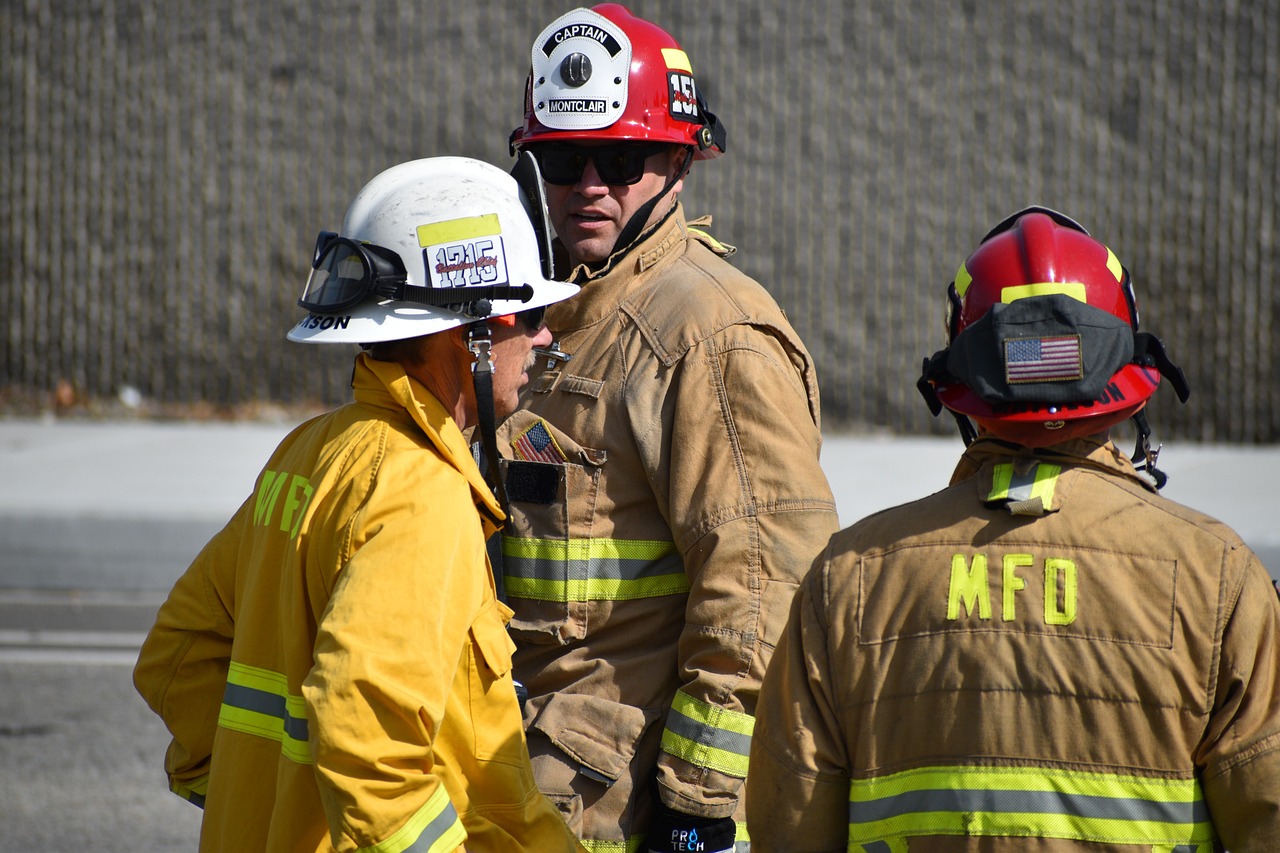
Common First Aid Techniques
When it comes to emergencies, knowing can be the difference between life and death. Imagine being at a family gathering when suddenly someone collapses; panic sets in, but your knowledge of first aid can empower you to take action. First aid is not just a skill—it's a lifeline, a way to bridge the gap until professional help arrives. In this section, we'll dive into two of the most crucial first aid techniques: Cardiopulmonary Resuscitation (CPR) and choking relief techniques like the Heimlich maneuver.
CPR is a life-saving technique used when someone's heart stops beating or they stop breathing. Think of it as a way to keep the blood flowing and oxygen reaching the brain until emergency services can take over. The importance of knowing how to perform CPR cannot be overstated. Studies show that immediate CPR can double or even triple a victim's chance of survival. It’s like being a superhero for a few critical moments!
Performing CPR involves a series of steps that you need to memorize. Here’s a quick rundown:
- Check the scene for safety and ensure the person is unresponsive.
- Call for emergency help or ask someone else to do so.
- Begin chest compressions at a rate of 100 to 120 compressions per minute.
- If trained, provide rescue breaths after every 30 compressions.
In a high-pressure situation, these steps can seem daunting, but practicing them can make all the difference. Remember, even if you are unsure, doing something is better than doing nothing!
Knowing when to initiate CPR is just as important as knowing how to do it. Signs of cardiac arrest include:
- Unresponsiveness: The person does not wake up or respond when you shake them.
- Abnormal breathing: They may be gasping, or not breathing at all.
Being able to quickly identify these signs allows you to act swiftly, increasing the chances of survival.
Choking is another emergency situation where your first aid knowledge can shine. Imagine someone at a dinner party suddenly clutching their throat—it's a terrifying sight! The Heimlich maneuver is a technique that can help dislodge food or an object blocking the airway.
To perform the Heimlich maneuver on an adult, follow these steps:
- Stand behind the person and wrap your arms around their waist.
- Make a fist with one hand and place it just above their navel.
- Grab your fist with your other hand and thrust inward and upward.
Repeat this motion until the object is expelled or the person becomes unresponsive. It’s a simple yet effective technique that can save a life in a matter of seconds.
In conclusion, mastering these common first aid techniques can empower you to handle emergencies with confidence. Whether it’s performing CPR or assisting someone who is choking, your knowledge can make you a hero in a critical moment. Don't wait for an emergency to learn these skills—consider taking a first aid course to ensure you’re prepared for anything life throws your way!
Q: How often should I refresh my first aid knowledge?
A: It's recommended to take a first aid course every two years to stay updated on the latest techniques and guidelines.
Q: Can I perform CPR on children?
A: Yes, CPR techniques for children are similar to adults, but the compressions and breaths are adjusted for their smaller size.
Q: What should I include in my first aid kit?
A: A well-stocked first aid kit should include bandages, antiseptics, gauze, scissors, and a CPR face shield, among other essentials.

Cardiopulmonary Resuscitation (CPR)
Cardiopulmonary Resuscitation, commonly known as CPR, is a critical life-saving technique that everyone should be familiar with. Imagine you're at a family gathering, enjoying a barbecue, and suddenly someone collapses. Panic sets in, but knowing CPR can turn you from a bystander into a hero. CPR is designed to maintain blood flow to the brain and vital organs when a person's heartbeat or breathing has stopped. This technique can significantly increase the chances of survival, making it an essential skill in emergency situations.
Performing CPR involves a series of steps that can be easily remembered with a little practice. The basic components include chest compressions and, if you're trained, rescue breaths. The key is to act quickly and confidently. When you encounter someone who is unresponsive, the first thing you should do is call for help or have someone else do it while you start CPR. Timing is crucial, and every second counts!
To give you a clearer picture, let’s break down the steps involved in performing CPR:
| Step | Description |
|---|---|
| 1. Check Responsiveness | Gently shake the person and shout, "Are you okay?" If there's no response, proceed to the next step. |
| 2. Call for Help | Call emergency services or ask someone else to do so while you prepare to start CPR. |
| 3. Position Your Hands | Place the heel of one hand on the center of the person's chest, then place your other hand on top and interlock your fingers. |
| 4. Start Chest Compressions | Push down hard and fast, at a rate of 100 to 120 compressions per minute. Aim for a depth of about 2 inches. |
| 5. Give Rescue Breaths (if trained) | After every 30 compressions, give 2 rescue breaths by tilting the head back, pinching the nose, and sealing your lips over the person's mouth. |
Now, it's essential to recognize the signs of cardiac arrest. Look for unresponsiveness, abnormal breathing patterns, or no breathing at all. If you see these signs, don’t hesitate! Start CPR immediately. Remember, it's always better to do something than nothing at all. Even if you're unsure, the act of performing CPR can keep blood flowing until professional help arrives.
In summary, knowing how to perform CPR can be the difference between life and death in critical situations. It's not just a skill; it's a responsibility. So, why not take a CPR course? You never know when you might need it. Empower yourself with this knowledge, and you could save a life someday!
- What should I do if I'm unsure about performing CPR? - If you're not trained, don't hesitate to call emergency services. They can guide you through the process over the phone.
- Can I hurt someone by performing CPR? - While it's possible to cause some injuries, the risk of not performing CPR is far greater. Always prioritize saving a life.
- How often should I refresh my CPR training? - It's recommended to take a CPR refresher course every two years to keep your skills sharp.

Steps to Perform CPR
Performing CPR can be a daunting task, but knowing the steps can empower you to act confidently in a life-threatening situation. First, you need to ensure the scene is safe for both you and the victim. Once you're certain it's safe, approach the person and check for responsiveness by gently shaking their shoulders and asking if they are okay. If there’s no response, it’s time to call for help. Dial emergency services immediately or ask someone nearby to do so while you prepare to start CPR.
Next, you’ll want to assess the victim's breathing. Look for any signs of normal breathing, such as chest rising and falling, for no more than 10 seconds. If the person is not breathing or is gasping, it’s time to begin CPR. Remember, every second counts! Start with chest compressions, which are crucial for maintaining blood flow to the brain and vital organs. Place the heel of one hand on the center of the person's chest, and place your other hand on top of the first. Keep your elbows straight and use your body weight to push down hard and fast, aiming for a rate of 100 to 120 compressions per minute.
After every 30 compressions, it’s time to give two rescue breaths. To do this, tilt the victim’s head back slightly to open the airway. Pinch their nose shut, cover their mouth with yours to create an airtight seal, and give two breaths, each lasting about one second. Watch for the chest to rise with each breath. If it doesn’t, reposition the head and try again. It’s important to continue this cycle of 30 compressions followed by 2 breaths until medical help arrives or the person shows signs of recovery.
Here’s a quick recap of the CPR steps:
- Ensure the scene is safe.
- Check for responsiveness.
- Call for emergency help.
- Assess breathing.
- Perform chest compressions (30 compressions).
- Give rescue breaths (2 breaths).
- Repeat the cycle until help arrives.
Remember, it’s better to act and perform CPR than to do nothing at all. Even if you’re unsure, your efforts could be the difference between life and death. If you’re interested in learning more, consider taking a certified CPR course. These courses provide hands-on training and the confidence you need to save a life.
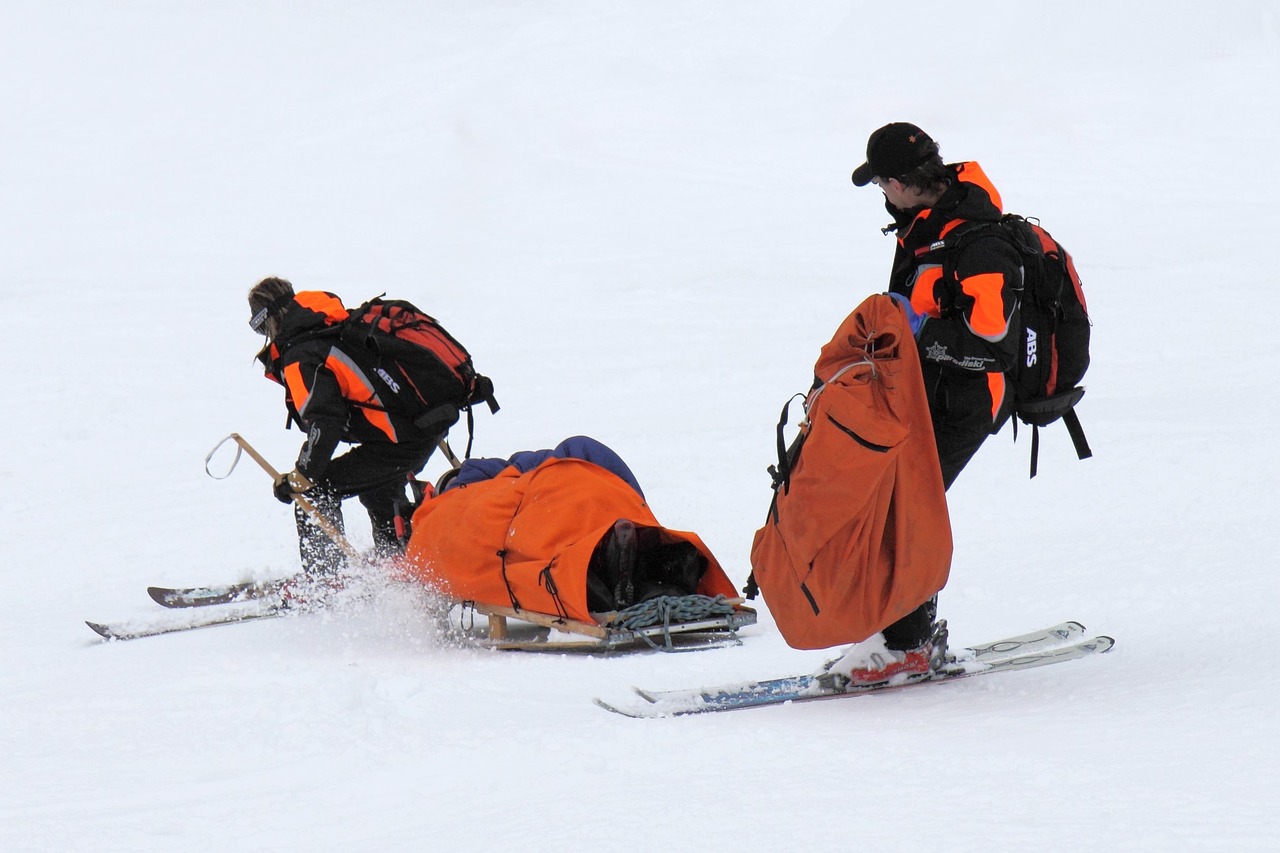
Recognizing Cardiac Arrest
Cardiac arrest is a critical condition that requires immediate attention, and recognizing its signs can be the difference between life and death. Imagine you're at a family gathering, laughter fills the air, and suddenly, someone collapses. Your heart races, and you realize you need to act fast. But how do you know if it's cardiac arrest? The key is to look for specific signs that indicate the person needs urgent help.
One of the most telling signs of cardiac arrest is unresponsiveness. If the person is not responding to your voice or gentle shaking, it's a clear signal that something is seriously wrong. Additionally, you should check for abnormal breathing. This can manifest as gasping, irregular breaths, or complete cessation of breathing. It's essential to distinguish between normal and abnormal breathing patterns, as this can guide your next steps.
Here are the primary indicators to watch for when assessing someone who may be experiencing cardiac arrest:
- Unresponsiveness: The individual does not respond to verbal or physical stimuli.
- Absence of normal breathing: No breathing or only gasping breaths.
- Pale or bluish skin: The skin may appear pale or take on a bluish hue, especially around the lips and fingertips.
- Weak or absent pulse: If you're trained to check for a pulse, you may find it weak or completely absent.
Recognizing these signs quickly allows you to take action, such as calling emergency services and initiating CPR. Remember, time is of the essence in these situations; the sooner you act, the better the chances of survival. It's like being a superhero for a moment—your quick thinking and knowledge can save a life.
In conclusion, being able to recognize cardiac arrest is not just a skill; it's a responsibility. Equip yourself with the knowledge to identify these signs, and you'll be prepared to jump into action when it matters most. After all, in emergencies, every second counts!
Here are some common questions regarding cardiac arrest and first aid:
- What should I do if I suspect someone is having a cardiac arrest? Call emergency services immediately and start CPR if you're trained.
- Can cardiac arrest happen to anyone? Yes, it can occur in individuals of any age, though certain risk factors increase the likelihood.
- How can I prepare myself for such emergencies? Taking a first aid and CPR course can provide you with the skills and confidence to act in emergencies.
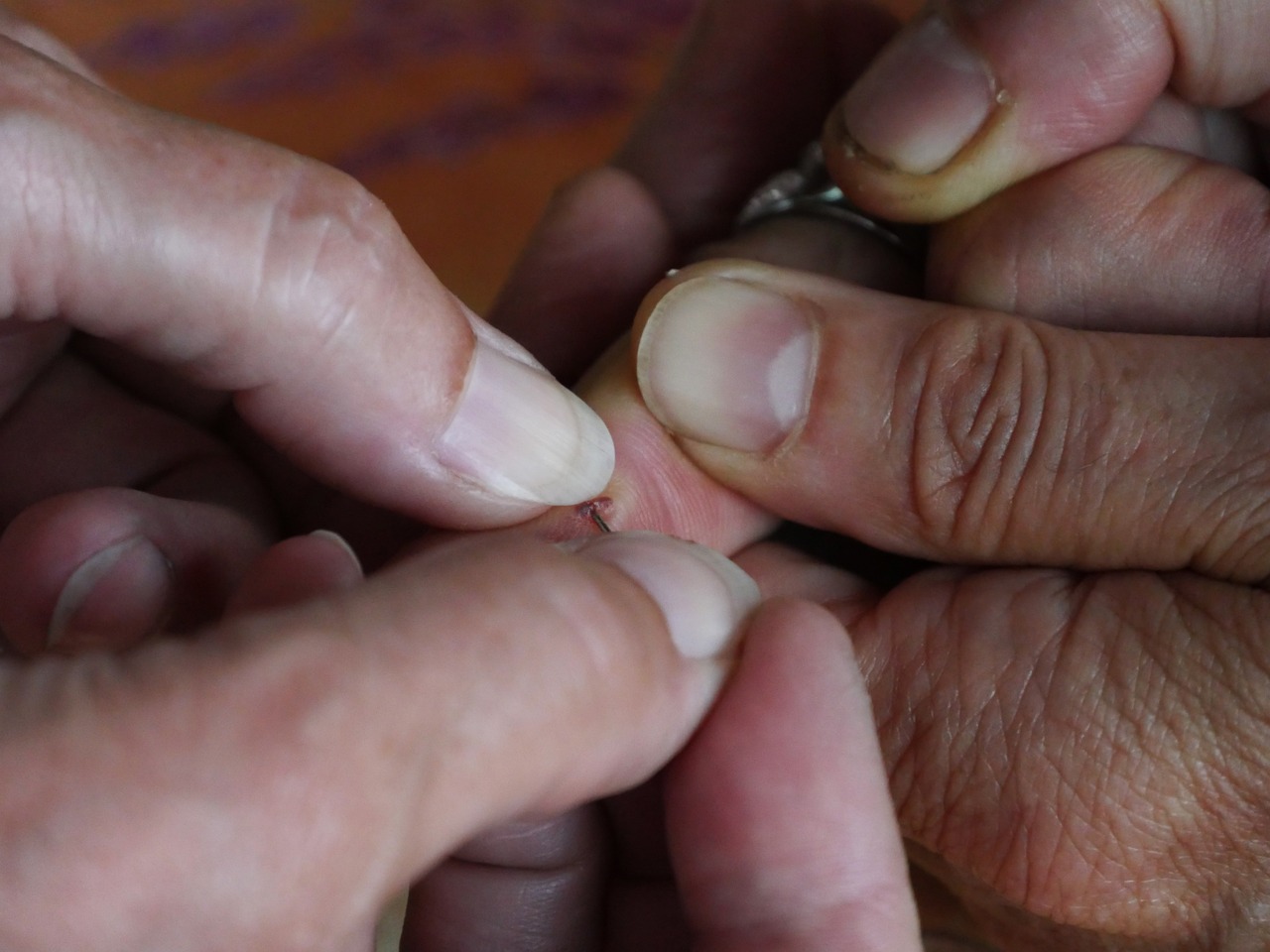
Choking Relief Techniques
Choking can happen in the blink of an eye, turning a casual meal into a life-threatening emergency. It’s one of those situations that can leave you feeling helpless, but knowing how to respond can make all the difference. Imagine sitting at a dinner table, laughter filling the air, when suddenly, someone starts to gasp for breath. Panic sets in, but with the right techniques at your fingertips, you can act swiftly and confidently. Understanding choking relief techniques, particularly the Heimlich maneuver, can empower you to save a life.
The Heimlich maneuver is a first aid technique designed to expel an obstruction from the airway of a choking person. It’s a simple yet effective method that can be performed on adults and children over the age of one. The key is to act quickly and decisively. Here’s how it works:
- Assess the Situation: First, determine if the person is truly choking. If they can cough, speak, or breathe, encourage them to continue coughing to expel the object. If they can’t, it’s time to step in.
- Position Yourself: Stand behind the person, wrap your arms around their waist, and lean them slightly forward.
- Perform Abdominal Thrusts: Make a fist with one hand and place the thumb side against the middle of their abdomen, above the navel. Grasp your fist with your other hand and thrust inward and upward with quick, forceful motions. Repeat until the object is dislodged or the person becomes unconscious.
- Call for Help: If the person loses consciousness, call emergency services immediately. It’s crucial to get professional help on the way.
But what if the choking victim is an infant? The technique differs slightly. For infants under one year old, you should:
- Lay the infant face down on your forearm, supporting their head with your hand.
- Give five firm back blows between the shoulder blades with the heel of your hand.
- If the object doesn’t come out, flip the infant onto their back and give five chest thrusts using two fingers in the center of their chest.
Remember, the goal is to create enough pressure to expel the obstruction without causing further injury. It’s essential to stay calm and reassure the person while you assist them. The act of choking can be frightening, and your composure can help ease their panic.
In addition to the Heimlich maneuver, it’s also vital to know when to call for emergency help. If the person becomes unconscious, or if you are unable to dislodge the object after several attempts, don’t hesitate to dial emergency services. Time is of the essence, and professional medical assistance can be crucial.
In summary, mastering choking relief techniques is not just a skill; it’s a responsibility. By being prepared and informed, you can turn a potentially tragic situation into one of survival. So, take the time to practice these techniques and consider enrolling in a first aid course. It’s an investment in your confidence and the safety of those around you.
Q1: What should I do if I see someone choking?
A1: Assess if the person can cough or speak. If they can’t, perform the Heimlich maneuver or back blows for infants. Call for emergency help if needed.
Q2: Can I perform the Heimlich maneuver on myself?
A2: Yes, if you are alone and choking, you can use a chair or a hard surface to perform abdominal thrusts on yourself.
Q3: How can I prevent choking incidents?
A3: Chew food thoroughly, avoid talking or laughing while eating, and keep small objects away from young children.
Q4: Is it safe to perform the Heimlich maneuver on pregnant women?
A4: Yes, but you should modify the technique by performing chest thrusts instead of abdominal thrusts.
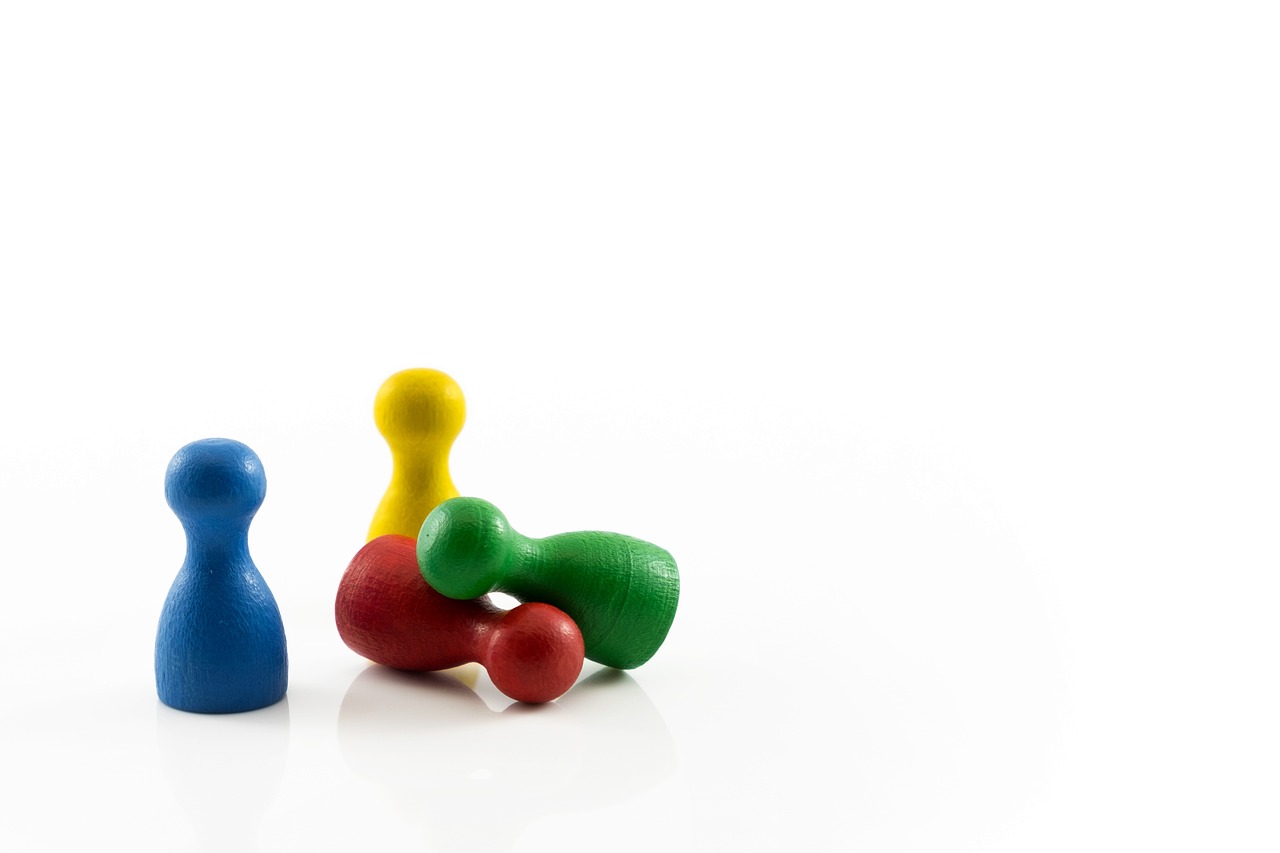
First Aid Kits Essentials
Having a well-stocked first aid kit is like having a safety net in your home, car, or workplace. It’s essential for addressing injuries and emergencies that can happen unexpectedly. Imagine you’re at a picnic, and someone accidentally cuts themselves while trying to open a bottle. If you have a first aid kit handy, you can quickly provide care and prevent the situation from escalating. But what exactly should you include in your first aid kit? Let’s dive into the essentials.
A comprehensive first aid kit should include a variety of items that cater to different types of injuries. Think of it as a toolbox for your health. Here are some of the key components that should be in every first aid kit:
- Adhesive Bandages: These are your go-to for minor cuts and scrapes. They help keep wounds clean and protected.
- Antiseptic Wipes: These are crucial for cleaning wounds to prevent infection. Think of them as the first line of defense.
- Gauze Pads and Tape: For larger wounds, gauze pads can absorb blood and protect the area. Tape keeps everything in place.
- Elastic Bandages: These are perfect for sprains or strains, providing support and reducing swelling.
- Pain Relievers: Over-the-counter medications like ibuprofen or acetaminophen can be lifesavers for headaches or minor aches.
Besides these basics, it’s also wise to include some specialized items that can cater to more specific needs. For example, if you’re an outdoor enthusiast, consider adding items like a thermal blanket or insect bite cream. If you have kids, including a digital thermometer and child-friendly pain relievers can be beneficial. It’s all about tailoring your first aid kit to your lifestyle and potential risks.
Moreover, understanding the purpose of each item in your first aid kit is crucial for effective emergency response. It’s not enough to just have the items; you should know how to use them. For instance, knowing how to properly clean a wound with antiseptic wipes and apply a bandage can make a significant difference in preventing infection.
Another important aspect is the maintenance of your first aid kit. It’s essential to regularly check and replenish your supplies. Imagine reaching for a bandage only to find it expired or missing! Set a reminder to review your kit every few months. This ensures that all supplies are up to date and in good condition, making a significant difference during emergencies. You never know when an accident might happen, so being prepared is key.
Q: How often should I check my first aid kit?
A: It’s a good practice to check your first aid kit every 3 to 6 months to ensure all items are in good condition and not expired.
Q: Can I customize my first aid kit?
A: Absolutely! Tailor your first aid kit to fit your lifestyle, activities, and any specific medical needs you or your family may have.
Q: Where should I keep my first aid kit?
A: Store your first aid kit in a cool, dry place that is easily accessible to everyone in your household or workplace.
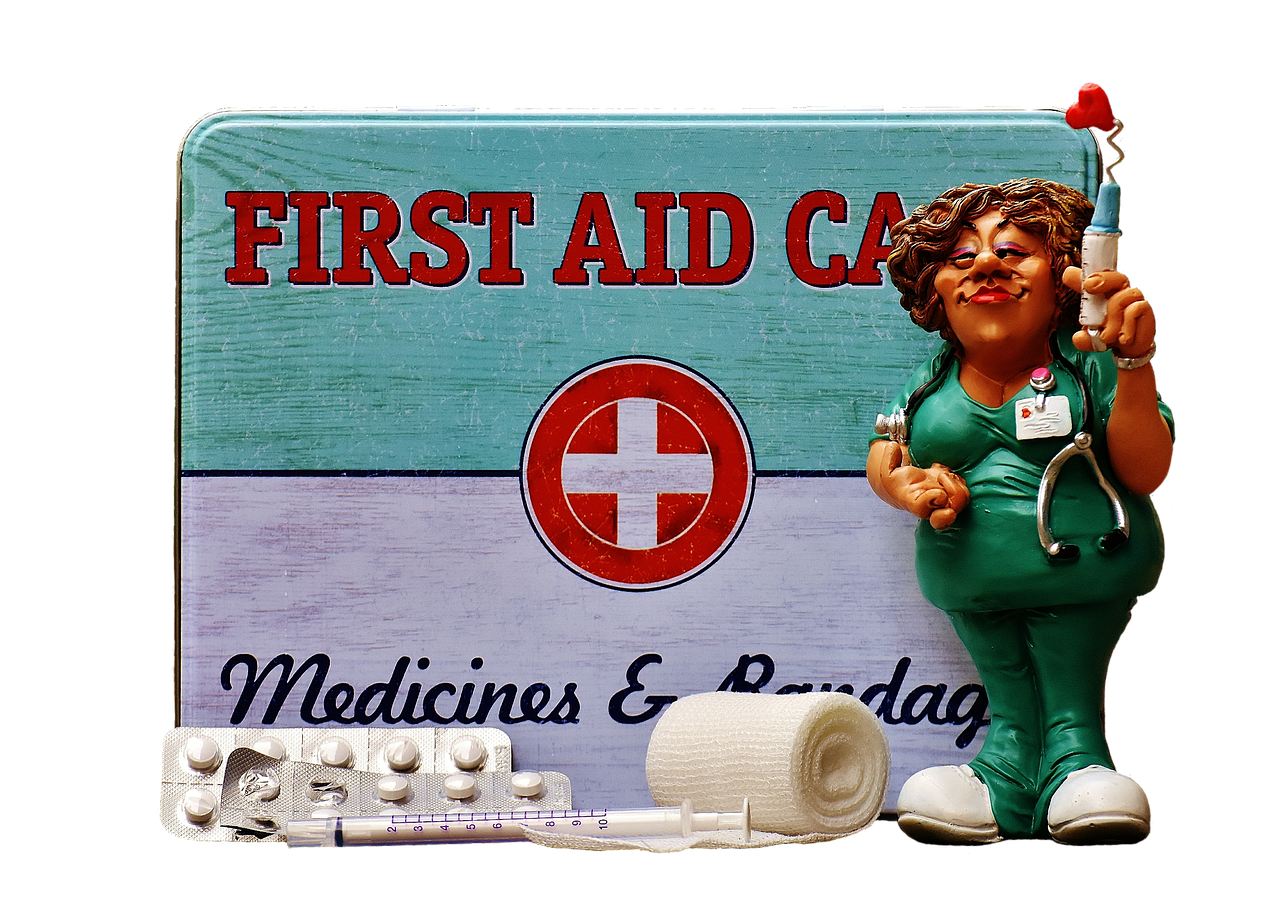
Essential Items for a First Aid Kit
When it comes to first aid kits, having the right items is crucial for effectively addressing injuries and emergencies. Imagine you're at a picnic and someone accidentally cuts their finger. If you have a well-stocked first aid kit, you can quickly provide assistance and prevent the situation from escalating. So, what should you include in your kit? Here are some essentials that every first aid kit should contain:
- Adhesive Bandages: These are your go-to for minor cuts and scrapes. They come in various sizes and are perfect for protecting wounds from dirt and bacteria.
- Antiseptic Wipes: Keeping wounds clean is essential. Antiseptic wipes help to disinfect the area before applying a bandage.
- Gauze Pads and Tape: For larger wounds, gauze pads provide coverage and protection, while tape secures them in place.
- Elastic Bandages: These are great for wrapping sprains or strains, providing support and reducing swelling.
- Scissors: A good pair of scissors can be invaluable for cutting tape, gauze, or clothing in an emergency.
- Medical Gloves: Wearing gloves can help protect both you and the injured person from infections.
- Pain Relievers: Over-the-counter medications like ibuprofen or acetaminophen can help alleviate pain and reduce fever.
- Instant Cold Packs: These are perfect for reducing swelling and numbing pain from injuries.
- CPR Face Shield: This is an essential item if you need to perform CPR, as it helps protect against potential infections.
- First Aid Manual: Having a manual on hand can guide you through various first aid procedures in case of emergencies.
But wait, there’s more! It’s not just about having these items; you need to know how to use them effectively. For instance, understanding how to properly apply a bandage or administer CPR can make all the difference in an emergency. It’s like being a superhero—having the right tools is great, but knowing how to use them is what truly saves the day.
Additionally, consider the specific needs of your family or group. If someone has allergies or specific medical conditions, tailor your first aid kit accordingly. For example, if someone is allergic to bee stings, including an epinephrine auto-injector could be a lifesaver. Always remember that a first aid kit is not a one-size-fits-all solution; it should reflect the unique needs of those who may use it.
Lastly, it’s essential to regularly check and replenish your first aid kit. Items can expire or get used up, and you want to ensure that everything is in good condition when you need it the most. Just like you wouldn’t drive a car with a flat tire, you shouldn’t rely on a first aid kit that’s missing essential supplies.
Q: How often should I check my first aid kit?
A: It's advisable to check your first aid kit every six months to ensure all items are in good condition and not expired.
Q: Can I use my first aid kit for pets?
A: Some items can be used for pets, but it's best to have a separate first aid kit specifically designed for animals.
Q: What should I do if I run out of a specific item?
A: Replace any used items as soon as possible to keep your kit fully stocked and ready for emergencies.
Q: Is it necessary to take a first aid course?
A: While it’s not mandatory, taking a first aid course can provide valuable knowledge and skills that can help you respond effectively in emergencies.
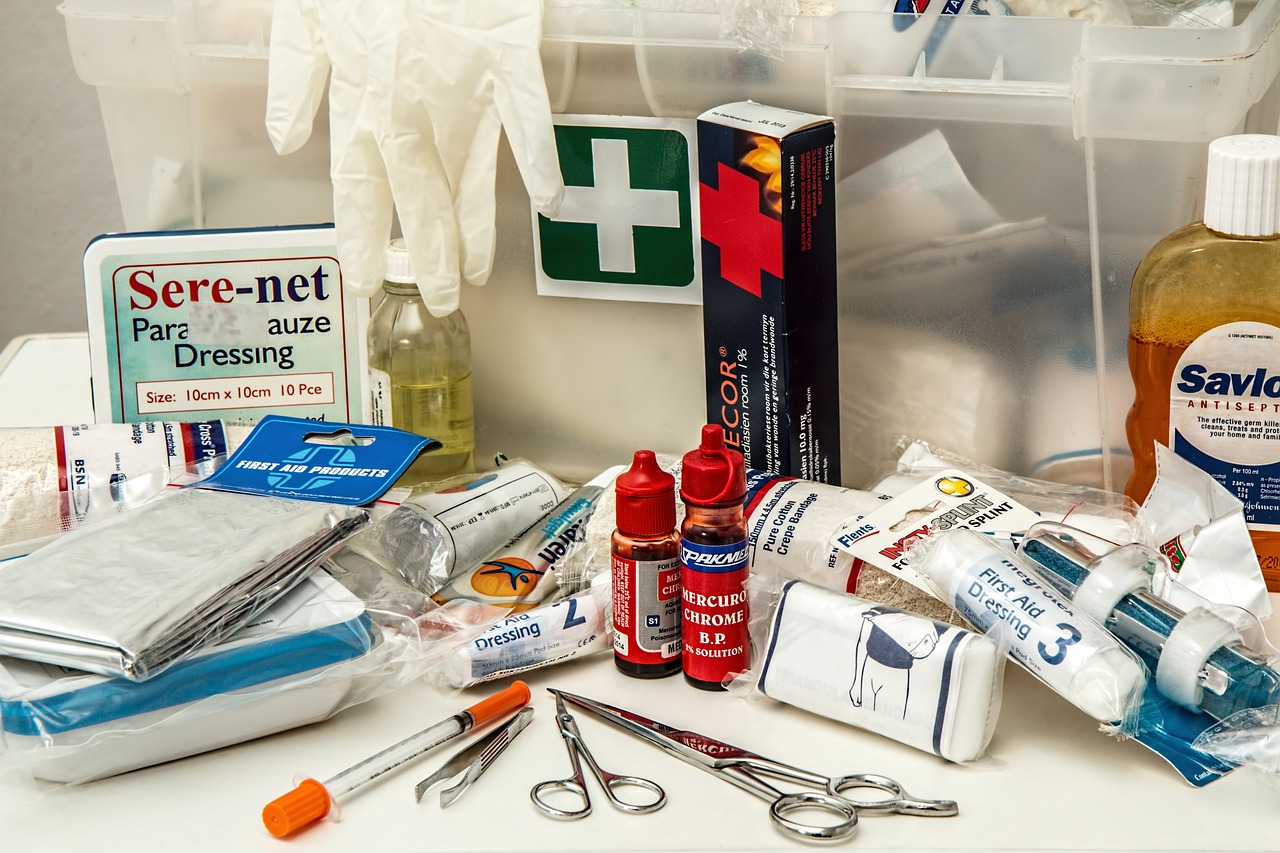
Maintaining Your First Aid Kit
Keeping your first aid kit in top shape is not just a good idea; it’s a necessity. Imagine being in an emergency situation, and you reach for your first aid kit only to find that it’s missing crucial items or that the supplies have expired. That’s not just a bummer; it could be a matter of life and death. To avoid such scenarios, regular maintenance of your first aid kit is essential. This means checking it periodically to ensure everything is stocked, organized, and in good condition.
First, you should set a schedule for checking your kit. Whether it's once a month or every three months, having a routine helps you stay on top of things. During these checks, look for the following:
- Expiration Dates: Many items, especially medications and antiseptics, have expiration dates. Using expired products can be ineffective or even harmful.
- Stock Levels: Make sure you have enough of essential items like band-aids, gauze, and antiseptic wipes. Restock as necessary.
- Condition of Supplies: Check for any damaged items. A torn bandage or a leaking antiseptic can render them useless in an emergency.
Additionally, consider keeping a log of your first aid kit contents. This can be as simple as a checklist that you update every time you use or replace an item. It helps you keep track of what you have and what you need to buy. You can even create a small table to keep things organized:
| Item | Quantity | Expiration Date |
|---|---|---|
| Adhesive Bandages | 20 | 12/2025 |
| Gauze Pads | 10 | 06/2024 |
| Antiseptic Wipes | 15 | 03/2023 |
Another critical aspect of maintaining your first aid kit is to educate yourself about its contents. Knowing what each item is used for can save precious time during an emergency. For instance, understanding how to use a triangular bandage can help you create a sling for an arm injury, while knowing how to apply a tourniquet can be life-saving in severe bleeding situations.
Lastly, make sure your first aid kit is easily accessible. Whether you keep it in your home, car, or workplace, ensure that everyone who might need it knows where it is located. You might even want to consider having multiple kits in different locations. After all, emergencies don’t always happen at convenient times or places!
Here are some common questions people have about maintaining their first aid kits:
- How often should I check my first aid kit? It's recommended to check your first aid kit at least every three months to ensure all items are stocked and in good condition.
- What should I do with expired items? Expired items should be disposed of properly and replaced with new supplies to ensure your kit is always ready for emergencies.
- Can I customize my first aid kit? Absolutely! Tailor your first aid kit to your specific needs, whether it’s for home use, travel, or sports activities.
Frequently Asked Questions
- What is first aid?
First aid is the immediate assistance provided to someone who is injured or unwell. It’s like the first line of defense in emergencies, helping to stabilize a person until professional medical help arrives.
- Why is knowing first aid important?
Knowing first aid can be a game changer in emergencies. It empowers you to act quickly and effectively, potentially saving lives. Think of it as having a superpower that kicks in when every second counts!
- What are some common first aid techniques I should know?
Some essential techniques include CPR (Cardiopulmonary Resuscitation) and the Heimlich maneuver for choking. These skills can prepare you for various emergencies, ensuring you know exactly what to do when the situation arises.
- How do I perform CPR?
To perform CPR, you need to follow a few key steps: check the person's responsiveness, call for help, and then begin chest compressions followed by rescue breaths. It’s crucial to act fast, as every moment matters!
- How can I recognize cardiac arrest?
Signs of cardiac arrest include unresponsiveness and abnormal breathing. If someone suddenly collapses and doesn't respond, it’s vital to take action immediately and start CPR.
- What should I do if someone is choking?
If someone is choking, you can perform the Heimlich maneuver. This involves standing behind the person, wrapping your arms around their waist, and giving quick, upward thrusts to dislodge the obstruction.
- What items should be included in a first aid kit?
A well-stocked first aid kit should have bandages, antiseptics, gauze, scissors, and pain relievers. Each item plays a specific role in treating injuries and should be easily accessible when needed.
- How often should I check my first aid kit?
It's a good idea to check your first aid kit regularly, at least every few months. Make sure all supplies are up to date and in good condition. This ensures you're always prepared for any emergencies that may arise.



















